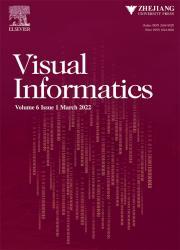A fine-grained deconfounding study for knowledge-based visual dialog
IF 3.8
3区 计算机科学
Q2 COMPUTER SCIENCE, INFORMATION SYSTEMS
引用次数: 0
Abstract
Knowledge-based Visual Dialog is a challenging vision-language task, where an agent engages in dialog to answer questions with humans based on the input image and corresponding commonsense knowledge. The debiasing methods based on causal graphs have gradually sparked much attention in the field of Visual Dialog (VD), yielding impressive achievements. However, existing studies focus on the coarse-grained deconfounding, which lacks a principled analysis of the bias. In this paper, we propose a fined-grained study of deconfounding on: (1) We define the confounder from two perspectives. The first is user preference (denoted as ), derived from human-annotated dialog history, which may introduce spurious correlations between questions and answers. The second is commonsense language bias (denoted as ), where certain words appear so frequently in the retrieved commonsense knowledge that the model tends to memorize these patterns, thereby establishing spurious correlations between the commonsense knowledge and the answers. (2) Given that the current question directly influences answer generation, we further decompose the confounders into and , based on their relevance to the current question. Specifically, and represent dialog history and high-frequency words that are highly correlated with the current question, while and are sampled from dialog history and words with low relevance to the current question. Through a comprehensive evaluation and comparison of all components, we demonstrate the necessity of jointly considering both and . Fine-grained deconfounding, particularly with respect to the current question, proves to be more effective. Ablation studies, quantitative results, and visualizations further confirm the effectiveness of the proposed method.
基于知识的视觉对话的细粒度解构研究
基于知识的视觉对话是一项具有挑战性的视觉语言任务,其中智能体根据输入的图像和相应的常识知识与人类进行对话以回答问题。基于因果图的去偏方法逐渐引起了视觉对话领域的广泛关注,并取得了令人瞩目的成就。然而,现有的研究主要集中在粗粒度的反发现上,缺乏对偏差的原则性分析。在本文中,我们提出了一个细粒度的反奠基研究:(1)我们从两个角度定义混淆。第一个是用户偏好(表示为Uh),它来源于人类注释的对话历史,这可能会在问题和答案之间引入虚假的相关性。第二种是常识性语言偏差(表示为Uc),其中某些单词在检索的常识性知识中出现得如此频繁,以至于模型倾向于记住这些模式,从而在常识性知识和答案之间建立虚假的相关性。(2)考虑到当前问题直接影响答案的生成,我们根据与当前问题的相关性,将混杂因素进一步分解为Uh1,Uh2和Uc1,Uc2。其中,Uh1和Uc1代表对话历史和与当前问题高度相关的高频词,Uh2和Uc2代表对话历史和与当前问题相关性较低的词。通过对所有组成部分的综合评估和比较,我们证明了联合考虑Uh和Uc的必要性。细粒度的拆解,特别是对于当前的问题,被证明是更有效的。消融研究、定量结果和可视化进一步证实了所提出方法的有效性。
本文章由计算机程序翻译,如有差异,请以英文原文为准。
求助全文
约1分钟内获得全文
求助全文
来源期刊

Visual Informatics
Computer Science-Computer Graphics and Computer-Aided Design
CiteScore
6.70
自引率
3.30%
发文量
33
审稿时长
79 days
 求助内容:
求助内容: 应助结果提醒方式:
应助结果提醒方式:


